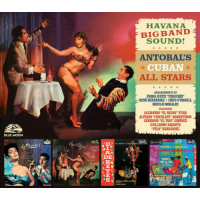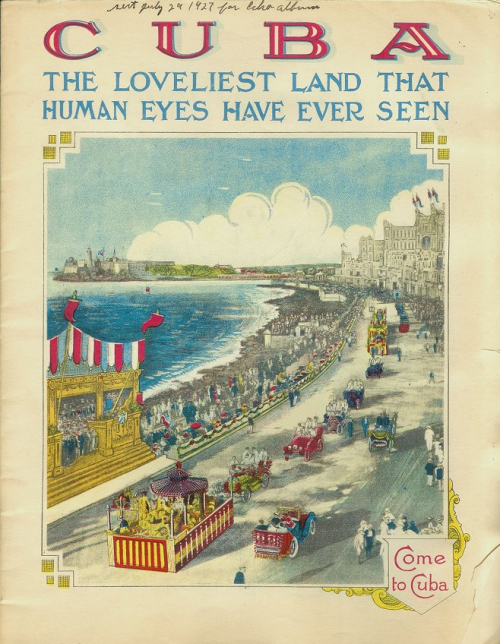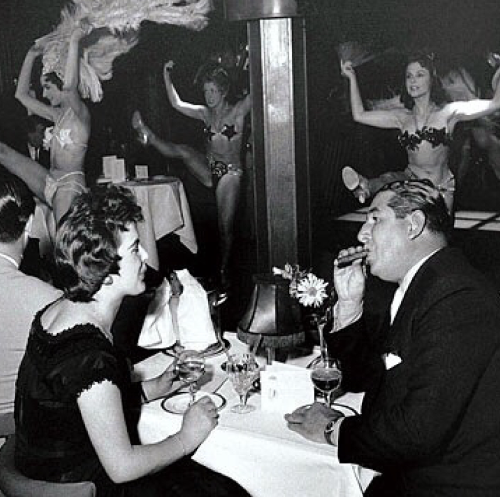
Havana in the 1950s was an exotic suburb of Las Vegas. How the Cuban capital became the playground of American tycoons, celebrities and hustlers is a long and sordid story. Here's the short version: After Cuba's independence from Spain in the late 1800s, the country became increasingly dependent, economically, on the U.S. At the start of the 20th century, American companies set up plantation systems to inexpensively harvest, package and ship a wide range of agricultural products back to the States. Or they subsidized Cuban shell companies to do the same for them.
In the 1920s, superwealthy Americans began to vacation in Havana during the winter months. The Depression and World War II brought a lull to the fast action. By the late 1940s and early '50s, however, Havana had ramped up its nightclub business to meet the demands for entertainment, gambling and vice. Movie and recording stars as well a celebrated writers visited and roosted there.

During this period, American organized crime moved in to operate Havana clubs, racetracks and casinos, primarily to launder money obtained illegally in the States. Corruption, payoffs and exploitation became the norm as organized crime paid off the police and government officials. All of this activity and abuse at the expense of average Cubans ultimately led to the Castro revolution and regime in January 1959.

A by-product of this frothy nightlife in the 1950s was the growing demand for Cuban bandleaders and musicians to perform at clubs. Havana's dance bands were known for their exceptional musicianship, arrangements and rhythms. Recording studios in the city operated at full tilt to turn out recordings of these bands for the local market and export. One of those prolific Cuban bandleaders was Eusebio Santiago Azpiazu.
Born in 1891, Azpiazu changed his name to Don Mario Antobal in the 1950s for commercial purposes. As revolution neared, Antobal wanted to document the best compositions of his publishing company, just in case the music was lost or confiscated. So Antobal began to produce a series of orchestral sessions featuring the best Cuban musicians under the direction of Obdulio Morales.
As Fresh Sound's Jordi Pujol writes in the liners notes to this new three-CD release, Antobal's Cuban All-Stars:
Antobal was the creator of an intriguing and captivating new dance rhythm. It was the Bembó, which differed radically from its predecessors in that it is played in six-eight time. Morales also contributed as arranger, but so did Chico O’Farrill, Peruchín, Gilberto Valdés, and René Hernández—the best in the field.
The orchestra, made up of the best soloists on the island, handled their excellent arrangements in an exciting fashion. Don Azpiazu’s youngest, Raul Azpiazu, handled the vocals along with Gina Martin, one of Cuba’s most colorful and outstanding vedettes, on the album “Ay Caramba!” while Roberto Cordero is featured on the other three albums—“Agua! Agua!” “Día de Reyes” and “Mango Mangué.” These recordings bring us the best of the dance rhythms of Havana with the big band sound of Antobal’s All-Stars!
What's special about this three-CD set, featuring four albums, is that you're hearing dance music by top Cuban musicians recorded in Havana in the late 1950s. My guess is Antobal left Cuba right after the revolution for New York with the session tapes in hand. There, he sold them to Decca's Felsted Records, which operated out of London Records' offices in New York, to meet the Latin dance craze in New York, Los Angeles and Miami.
The albums in this set released in the U.S. were Ay Caramba, Agua Agua, Dia De Reyes and Mango Mangue. The dance heat is stunning. One can only imagine what this music must have sounded like live in a Havana club. The U.S. had its share of Latin music then by leaders including Tito Puente, Tito Rodriguez and Machito (the first two were actually from Puerto Rico). But this Fresh Sound set is Cuban dance music by the Cuban artists who invented it and recorded in Havana. As authentic as it gets.
Don Mario Antobal died in New York in October 1966 at age 75.
In the 1920s, superwealthy Americans began to vacation in Havana during the winter months. The Depression and World War II brought a lull to the fast action. By the late 1940s and early '50s, however, Havana had ramped up its nightclub business to meet the demands for entertainment, gambling and vice. Movie and recording stars as well a celebrated writers visited and roosted there.

During this period, American organized crime moved in to operate Havana clubs, racetracks and casinos, primarily to launder money obtained illegally in the States. Corruption, payoffs and exploitation became the norm as organized crime paid off the police and government officials. All of this activity and abuse at the expense of average Cubans ultimately led to the Castro revolution and regime in January 1959.

A by-product of this frothy nightlife in the 1950s was the growing demand for Cuban bandleaders and musicians to perform at clubs. Havana's dance bands were known for their exceptional musicianship, arrangements and rhythms. Recording studios in the city operated at full tilt to turn out recordings of these bands for the local market and export. One of those prolific Cuban bandleaders was Eusebio Santiago Azpiazu.
Born in 1891, Azpiazu changed his name to Don Mario Antobal in the 1950s for commercial purposes. As revolution neared, Antobal wanted to document the best compositions of his publishing company, just in case the music was lost or confiscated. So Antobal began to produce a series of orchestral sessions featuring the best Cuban musicians under the direction of Obdulio Morales.
As Fresh Sound's Jordi Pujol writes in the liners notes to this new three-CD release, Antobal's Cuban All-Stars:
Antobal was the creator of an intriguing and captivating new dance rhythm. It was the Bembó, which differed radically from its predecessors in that it is played in six-eight time. Morales also contributed as arranger, but so did Chico O’Farrill, Peruchín, Gilberto Valdés, and René Hernández—the best in the field.
The orchestra, made up of the best soloists on the island, handled their excellent arrangements in an exciting fashion. Don Azpiazu’s youngest, Raul Azpiazu, handled the vocals along with Gina Martin, one of Cuba’s most colorful and outstanding vedettes, on the album “Ay Caramba!” while Roberto Cordero is featured on the other three albums—“Agua! Agua!” “Día de Reyes” and “Mango Mangué.” These recordings bring us the best of the dance rhythms of Havana with the big band sound of Antobal’s All-Stars!
What's special about this three-CD set, featuring four albums, is that you're hearing dance music by top Cuban musicians recorded in Havana in the late 1950s. My guess is Antobal left Cuba right after the revolution for New York with the session tapes in hand. There, he sold them to Decca's Felsted Records, which operated out of London Records' offices in New York, to meet the Latin dance craze in New York, Los Angeles and Miami.
The albums in this set released in the U.S. were Ay Caramba, Agua Agua, Dia De Reyes and Mango Mangue. The dance heat is stunning. One can only imagine what this music must have sounded like live in a Havana club. The U.S. had its share of Latin music then by leaders including Tito Puente, Tito Rodriguez and Machito (the first two were actually from Puerto Rico). But this Fresh Sound set is Cuban dance music by the Cuban artists who invented it and recorded in Havana. As authentic as it gets.
Don Mario Antobal died in New York in October 1966 at age 75.
This story appears courtesy of JazzWax by Marc Myers.
Copyright © 2024. All rights reserved.


























